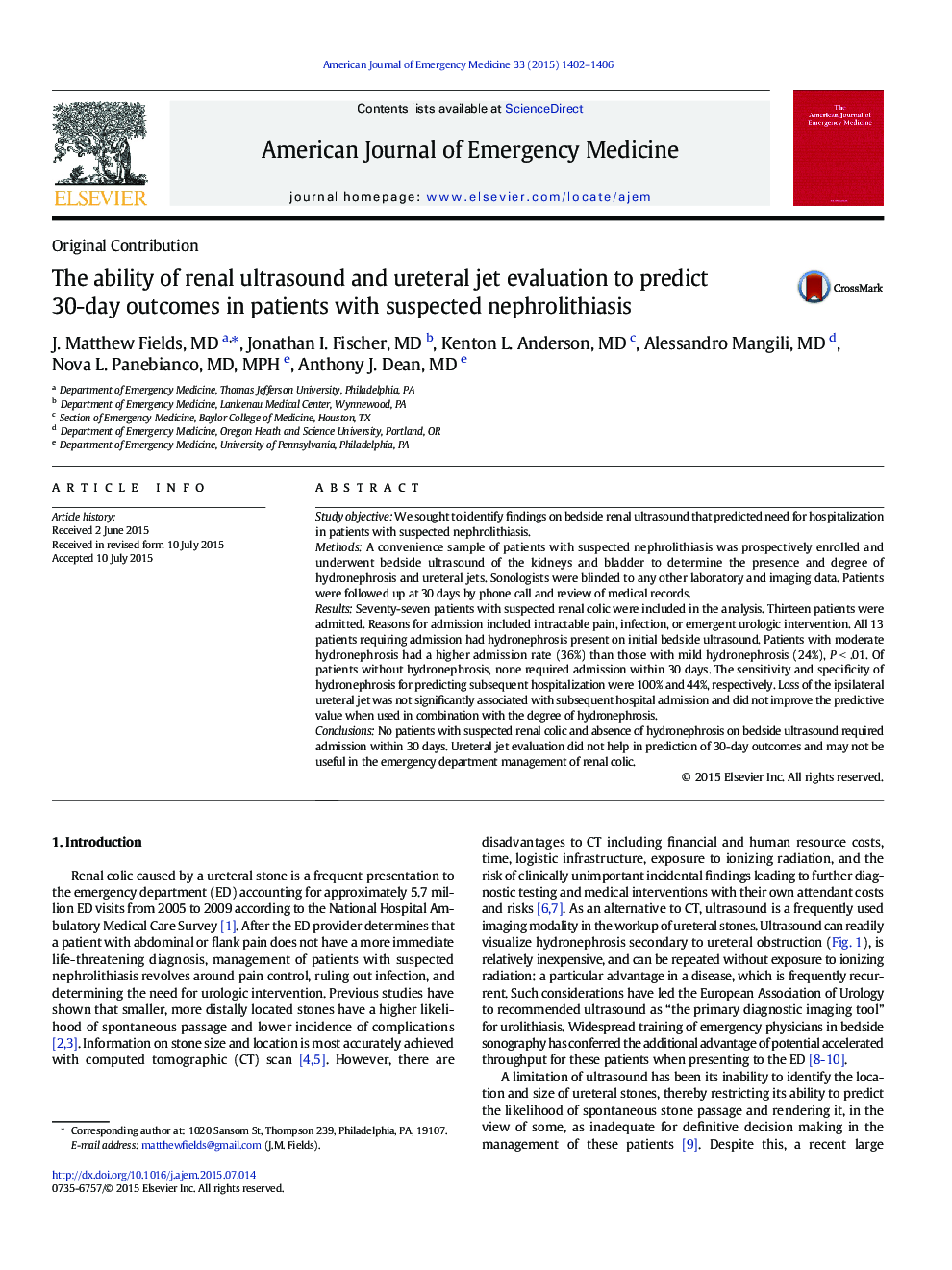| Article ID | Journal | Published Year | Pages | File Type |
|---|---|---|---|---|
| 6079141 | The American Journal of Emergency Medicine | 2015 | 5 Pages |
Study objectiveWe sought to identify findings on bedside renal ultrasound that predicted need for hospitalization in patients with suspected nephrolithiasis.MethodsA convenience sample of patients with suspected nephrolithiasis was prospectively enrolled and underwent bedside ultrasound of the kidneys and bladder to determine the presence and degree of hydronephrosis and ureteral jets. Sonologists were blinded to any other laboratory and imaging data. Patients were followed up at 30 days by phone call and review of medical records.ResultsSeventy-seven patients with suspected renal colic were included in the analysis. Thirteen patients were admitted. Reasons for admission included intractable pain, infection, or emergent urologic intervention. All 13 patients requiring admission had hydronephrosis present on initial bedside ultrasound. Patients with moderate hydronephrosis had a higher admission rate (36%) than those with mild hydronephrosis (24%), P < .01. Of patients without hydronephrosis, none required admission within 30 days. The sensitivity and specificity of hydronephrosis for predicting subsequent hospitalization were 100% and 44%, respectively. Loss of the ipsilateral ureteral jet was not significantly associated with subsequent hospital admission and did not improve the predictive value when used in combination with the degree of hydronephrosis.ConclusionsNo patients with suspected renal colic and absence of hydronephrosis on bedside ultrasound required admission within 30 days. Ureteral jet evaluation did not help in prediction of 30-day outcomes and may not be useful in the emergency department management of renal colic.
